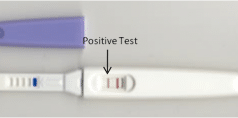
Teeth whitening strips have become a popular choice for those seeking a brighter smile without the hassle of professional treatments. However, one common question is whether you can eat immediately after using these strips. The answer isn’t a simple “yes” or “no” but depends on various factors. In this comprehensive guide, we’ll delve into teeth whitening strips, explore immediate post-whitening care, discuss what foods to avoid, and provide tips on managing tooth sensitivity. By the end, you’ll have a clear understanding of how to navigate mealtime after whitening for a radiant and confident smile.
Can you eat after whitening strips?
Yes, you can eat after using teeth whitening strips, but it’s recommended to wait for at least 30 minutes to an hour. Whitening strips contain ingredients that may temporarily make your teeth more porous, so it’s best to avoid consuming foods and drinks that can stain your teeth during this time, such as coffee, tea, red wine, or highly pigmented foods. Rinsing your mouth with water after using the strips can help reduce sensitivity and minimize potential staining. Remember to follow the instructions provided with the whitening strips for the best results.
What Are Teeth Whitening Strips?
Teeth whitening strips are thin, flexible pieces of plastic or polyethylene that are coated with a whitening gel containing peroxide-based bleaching agents. They are designed for at-home teeth whitening and are used to lighten the color of teeth and reduce stains and discoloration.
Application: Teeth whitening strips are applied directly to the surface of the teeth. They are designed to conform to the contours of your teeth, ensuring that the whitening gel comes into contact with the enamel, where stains and discoloration occur. The strips are usually clear or transparent, making them relatively inconspicuous.
Bleaching Agent: The whitening gel on the strips contains peroxide compounds, which act as a bleaching agent. These peroxides break down into oxygen ions that penetrate the tooth enamel. As they interact with the colored molecules responsible for staining, they break these molecules down, ultimately lightening the color of the teeth.
Duration: Most teeth whitening strip kits come with specific usage instructions. Typically, users wear the strips for a designated period, ranging from 30 minutes to an hour per session. Some products recommend using them once a day, while others suggest twice daily usage, depending on the desired level of whitening.
Treatment Period: The duration of the whitening treatment varies depending on the product and the degree of whitening desired. Some products offer noticeable results in just a few days, while others may require several weeks of consistent use.
Results: Throughout the treatment, users should see gradual improvements in the color and brightness of their teeth. However, the degree of whitening achieved can vary from person to person based on factors like the severity of staining, the frequency of use, and individual tooth characteristics.
How Do Teeth Whitening Strips Work?
Teeth whitening strips work through a process that involves using peroxide-based bleaching agents to lighten the color of teeth and reduce stains and discoloration. Here’s a more detailed explanation of how teeth whitening strips work:
- Teeth whitening strips are thin, flexible pieces of plastic or polyethylene that are coated with a whitening gel. Users apply these strips directly to the surface of their teeth. The strips are designed to conform to the shape of the teeth and adhere to them.
- The critical ingredient in the whitening gel on the strips is typically a peroxide compound, such as hydrogen peroxide or carbamide peroxide. These compounds release oxygen ions when they contact the tooth enamel.
- Once applied, the peroxide on the strips penetrates the enamel of the teeth. The enamel is the outermost layer of the tooth, where stains and discolorations can occur over time due to various factors like consumption of staining foods, beverages, or tobacco, as well as aging.
- The oxygen ions released by the peroxide penetrate the enamel and react with the colored molecules within the tooth’s structure. These colored molecules are responsible for the staining and discoloration of the teeth. The reaction with the oxygen ions effectively breaks down these colored molecules, which results in a gradual lightening of the tooth’s color.
- Users typically wear the whitening strips for a specified period, which can vary from product to product but usually ranges from 30 minutes to an hour per session. Throughout several applications, the gradual removal of stains and the lightening of the teeth’s color become more noticeable.
- The duration of the whitening treatment can vary based on the product and the individual’s goals. Some people may achieve their desired level of whiteness in a matter of days, while others may need several weeks of consistent use.
General Recommendations For Eating After Whitening
After applying teeth whitening strips, it’s generally recommended to wait at least 30 minutes to an hour before consuming any food or beverages. This waiting period allows the active whitening ingredients to take effect and ensures the gel has settled on your teeth.
After removing the whitening strips, consider rinsing your mouth with water or brushing your teeth gently with a soft-bristled toothbrush. This step helps remove any residual whitening gel and reduces the risk of accidentally ingesting it during your meal.
To maximize the effectiveness of your whitening treatment and maintain your results, it’s wise to steer clear of foods and drinks known to stain teeth immediately after treatment. This includes coffee, tea, red wine, dark berries, tomato-based sauces, and dark sodas. The enamel on your teeth may be more porous immediately after whitening, making them more susceptible to staining.
During the initial hours following whitening, choose foods that are white or neutral in color. These foods are less likely to cause immediate staining. Consider options like chicken, rice, pasta, yogurt, white bread, and mashed potatoes.
Sudden temperature changes can exacerbate tooth sensitivity, common after teeth whitening. To minimize discomfort, avoid consuming extremely hot or cold foods and beverages immediately after treatment.
Opt for soft and non-abrasive foods that won’t scratch or damage your enamel. Avoid crunchy, rigid, or abrasive items such as chips, nuts, and candies, as these may contribute to enamel erosion.
Foods To Avoid After Whitening
After whitening your teeth, it’s essential to be mindful of the foods you consume to ensure the longevity of your results. Here’s a detailed look at the types of foods to avoid after teeth whitening:
Staining Foods and Beverages:
Darkly pigmented foods and drinks are among the top culprits for staining teeth. These include coffee, tea, red wine, dark sodas, and certain berries like blueberries, blackberries, and cranberries. The pigments in these items can easily adhere to the porous enamel of freshly whitened teeth, potentially diminishing the brightening effects of the treatment.
Acidic Foods and Drinks:
Acidic foods and beverages, such as citrus fruits (oranges, lemons, limes), citrus juices, and vinegar-based salad dressings, can weaken tooth enamel. When enamel is compromised, it becomes more susceptible to staining and damage. Avoiding these items immediately after whitening can help protect your enamel.
Hot and Cold Foods:
Extreme temperature changes can trigger tooth sensitivity, which is common after teeth whitening. Very hot or icy foods and beverages, like ice cream, hot coffee, or icy drinks, may intensify discomfort. Opt for foods and drinks closer to room temperature during the immediate post-whitening period.
Crunchy and Hard Foods:
Hard, crunchy foods like popcorn kernels, nuts, and hard candies can pose a risk to your freshly whitened teeth. Chewing on such items may lead to microabrasions or damage to the enamel, potentially compromising the whitening results and causing sensitivity.
Tobacco Products:
Smoking or using smokeless tobacco products is one of the most significant contributors to tooth staining. If you’ve just undergone teeth whitening, it’s an excellent opportunity to consider quitting tobacco to preserve your newly brightened smile.
Final Words
Maintaining a bright and radiant smile after teeth whitening requires careful consideration of your dietary choices. Avoiding staining foods and beverages, acidic items, extreme temperatures, hard or crunchy foods, and tobacco products during the immediate post-whitening period is essential to preserve the results of your treatment. Additionally, be mindful of colored sauces and products like toothpaste or mouthwash containing artificial dyes. While these recommendations are essential, they don’t mean you must give up your favorite foods entirely; instead, consume them in moderation and employ preventive measures to protect your newly whitened teeth. Ultimately, with proper care and attention to your diet, you can enjoy a beautifully white smile for an extended period and continue to savor the pleasures of a diverse culinary experience.
FAQ’s
What foods should I avoid after teeth whitening?
Avoid staining foods and drinks such as coffee, tea, red wine, dark berries, and highly pigmented sauces. Also, avoid acidic items, extremely hot or cold foods, and complex, crunchy snacks.
Are there any side effects of teeth whitening?
Common side effects of teeth whitening include tooth sensitivity and gum irritation. These effects are usually temporary and can be managed with specialized toothpaste or gels for sensitive teeth.
How long do teeth whitening results last?
The duration of whitening results varies from person to person and depends on factors like diet and oral care. With proper maintenance and avoidance of staining substances, results can last several months to a year.








